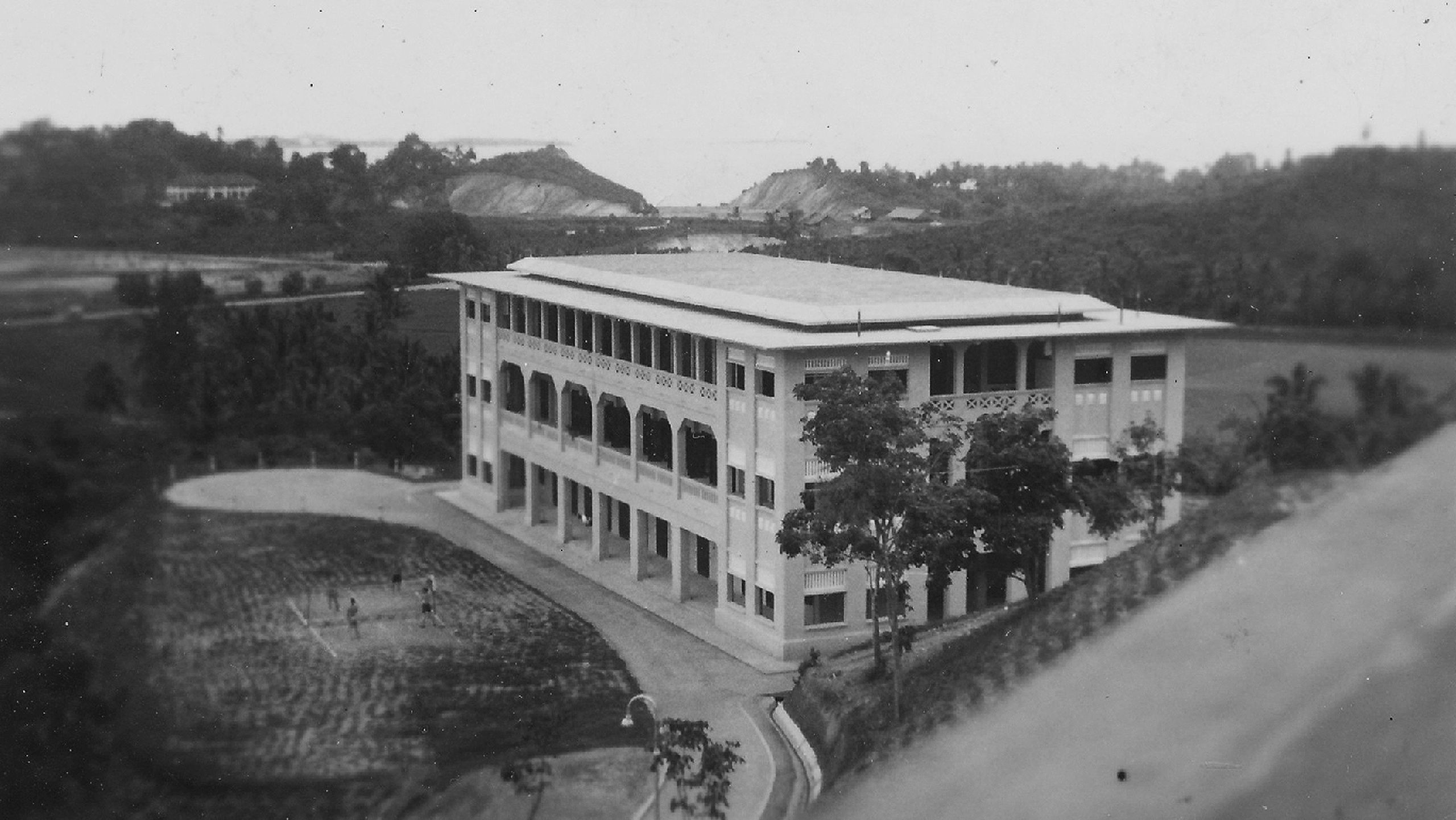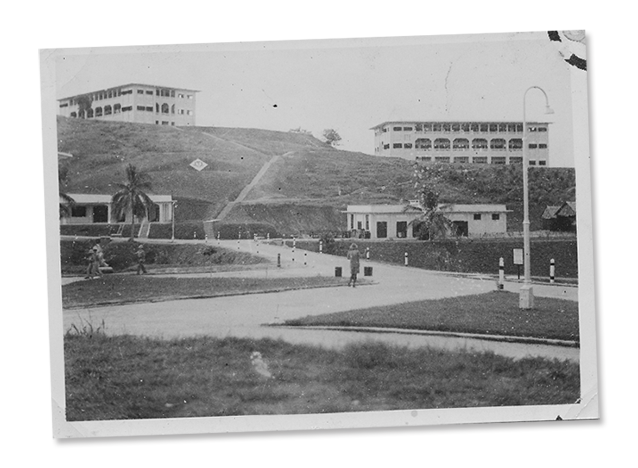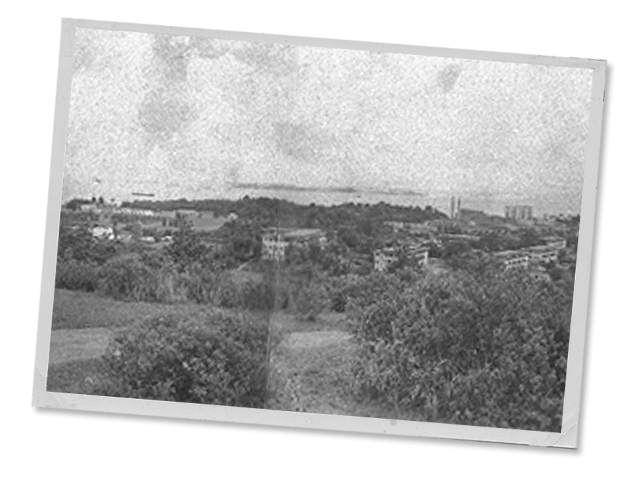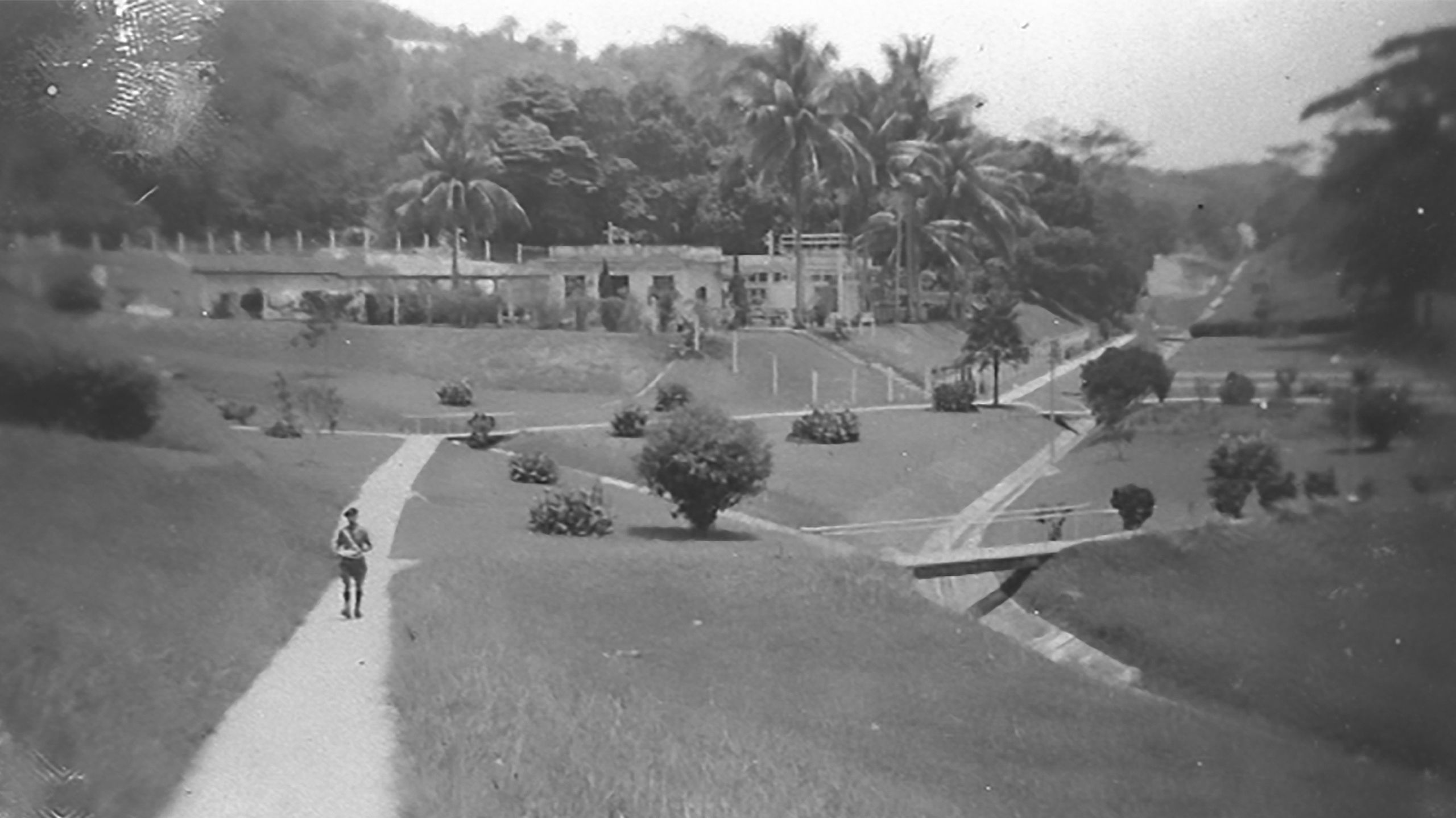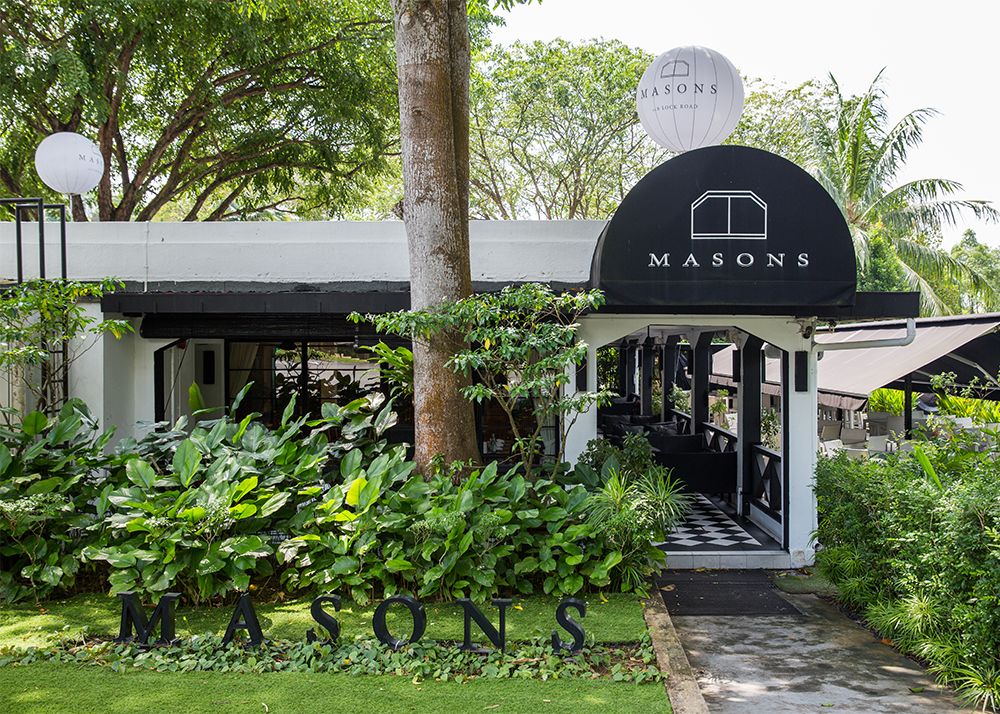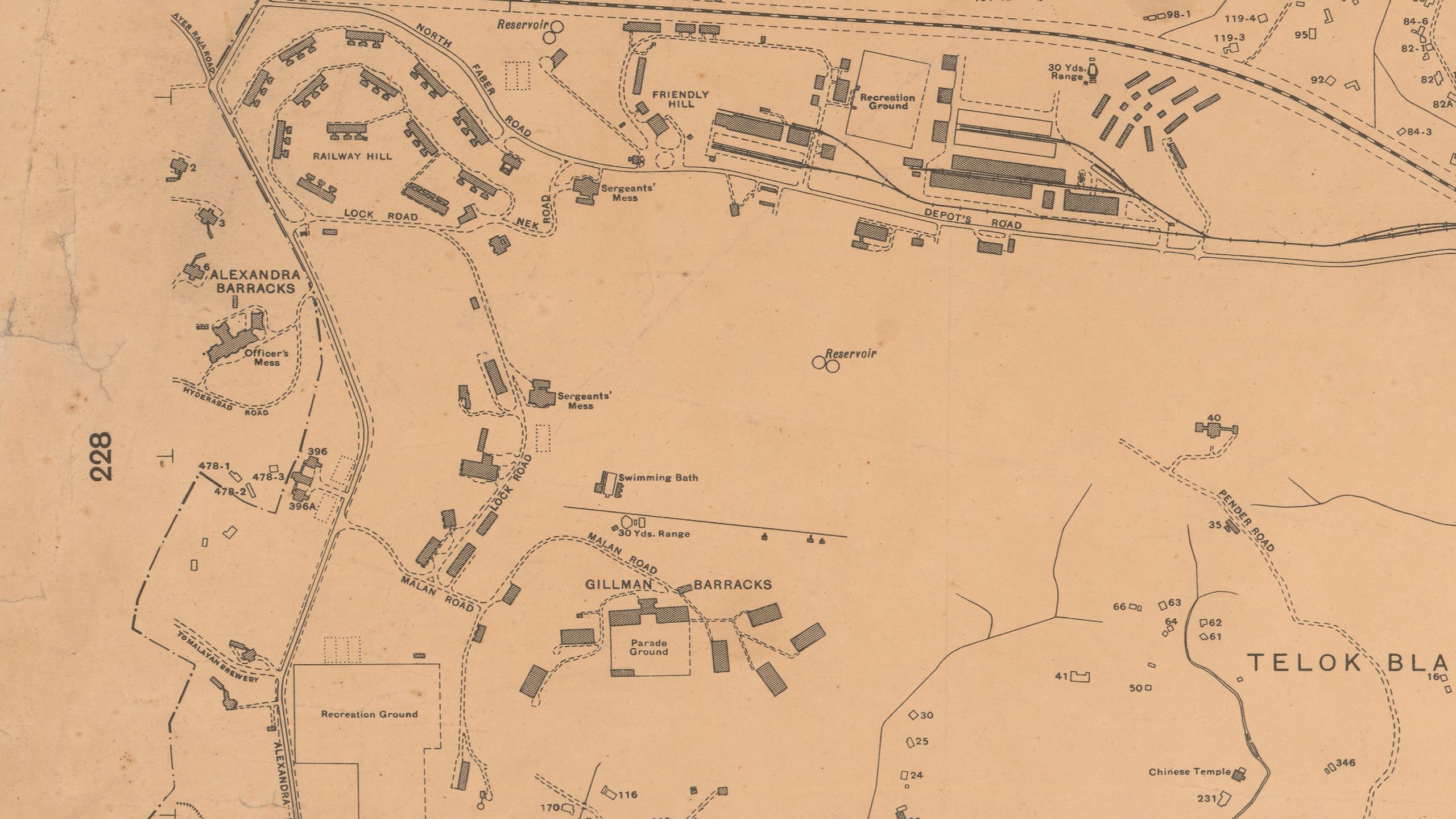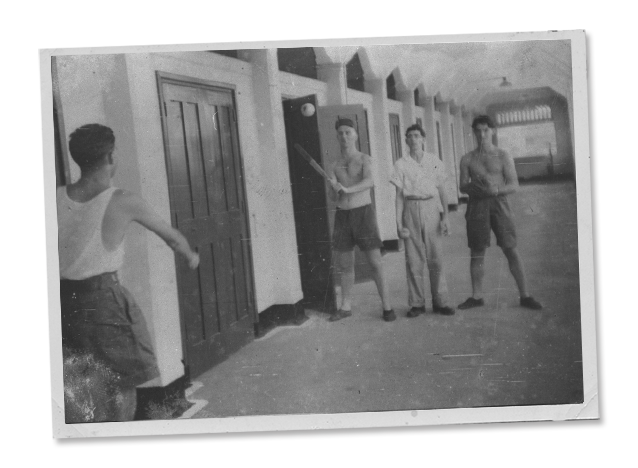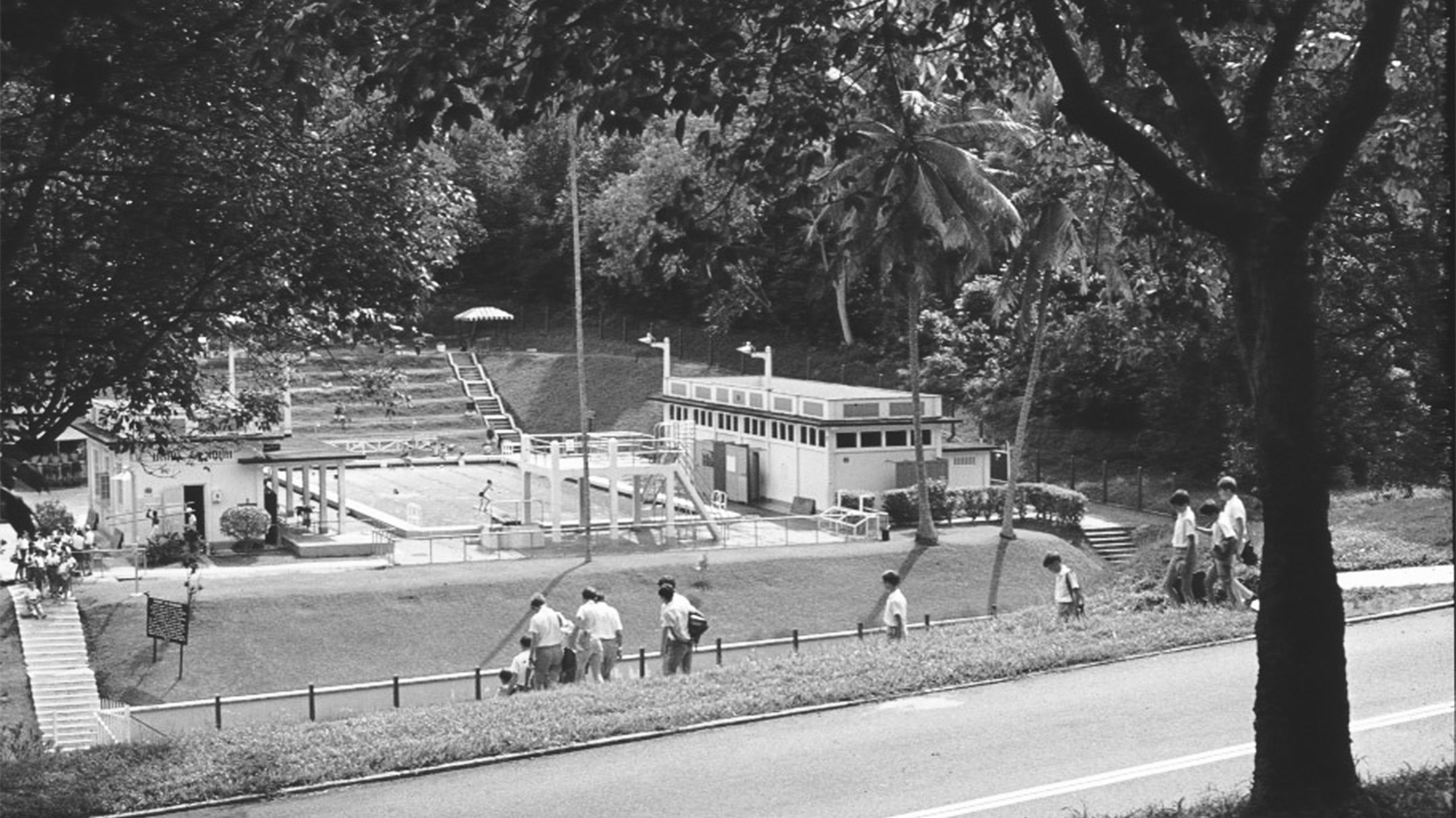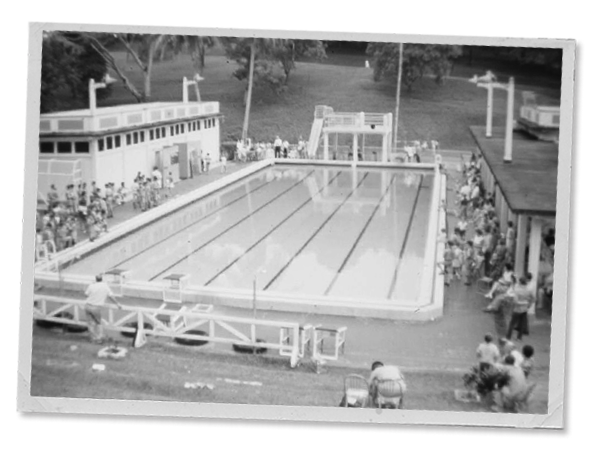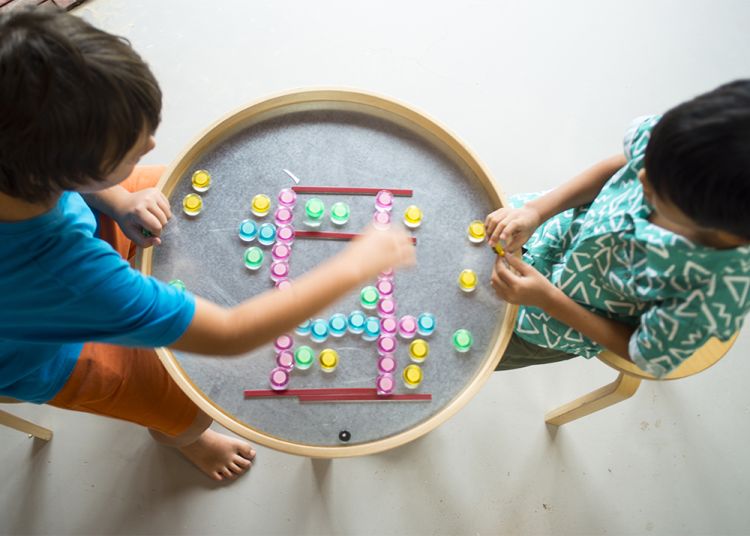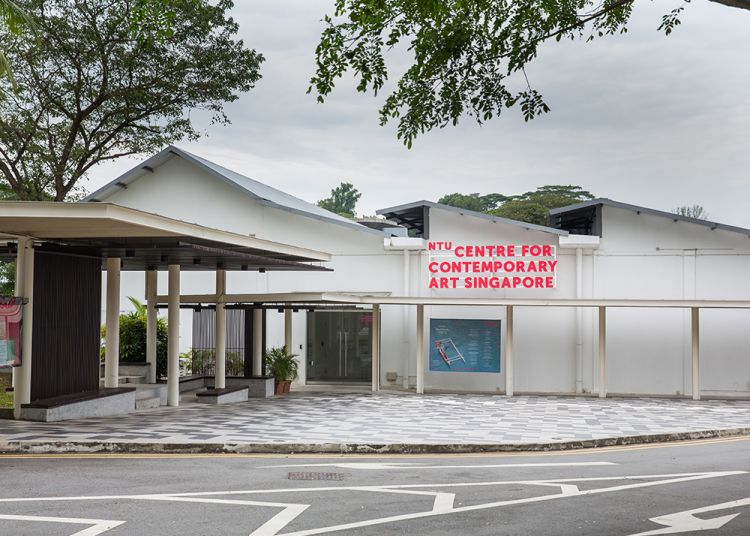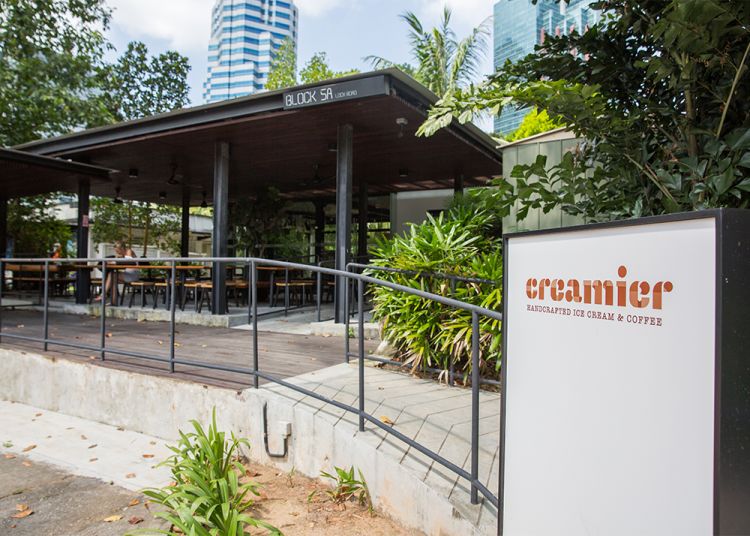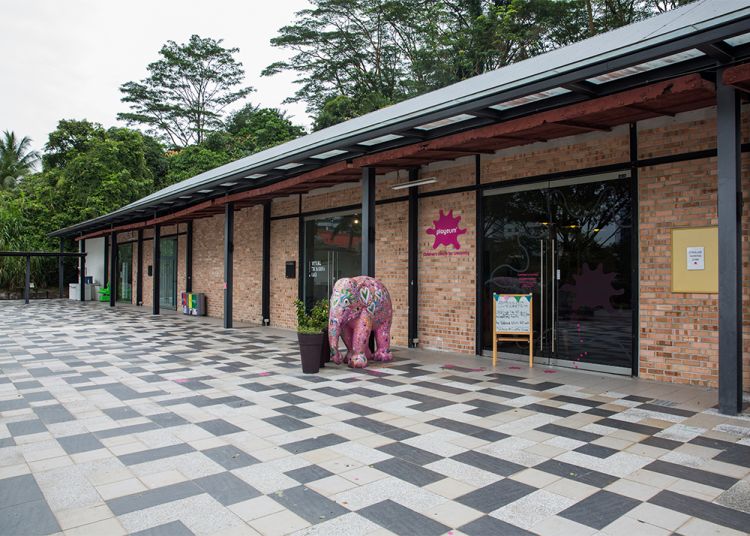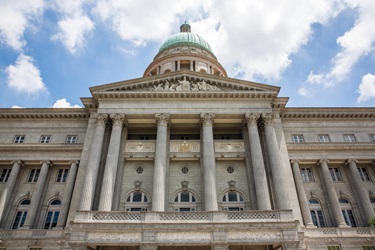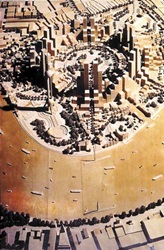In 2017, Gillman Barracks celebrated its fifth anniversary as a visual arts hub. Challenge goes on a heritage and history tour to find out more about its glorious past.
Photo: Glyn Wright Collection, courtesy of National Archives of Singapore
An arts hub today, Gillman Barracks once housed the British Army’s military men and their families. There, the residents enjoyed cool breezes and views of a luscious jungle swamp, now Keppel Harbour.
The stairs between Blocks 37 and 38 are now overrun with trees. Photo: Glyn Wright Collection, courtesy of National Archives of Singapore
Ms Sally McHale is the daughter of a British officer who served in Malaya during the Malayan Emergency. These days, she provides guided tours of Gillman Barracks as a Friends of the Museums docent.
From the second level of Block 9, she showed participants on a tour the view that her dad had admired. “He absolutely loved seeing so much green. Having such a good view really put him at ease in times of stress,” she recalled.
Officers at the Barracks once enjoyed this view. Photo: William Wee Collection, courtesy of National Archives of Singapore
The barracks housed over 50 buildings when it was completed in 1936. Photo: William Wee Collection, courtesy of National Archives of Singapore
Colourful History
Dotted among the greenery are black-and-white blocks, now home to bars, restaurants and 12 art galleries from six countries. With its tranquil charm complementing the range of leisure options there, Gillman Barracks often appears in lists of places for hanging out with friends away from the crowds in the city.
Masons at Block 8 offers European cuisine. Photo: Norman Ng
But Gillman Barracks wasn’t always the cool contemporary arts cluster that it is today. Known as Gillman Village from 1996 to 2010, it was launched as a lifestyle enclave for commercial use but did not take off. In 2010, its name reverted to Gillman Barracks and a more concerted plan to revitalise the space as an arts hub was announced. After a two-year makeover by public agencies such as the Economic Development Board, National Arts Council and JTC Corporation, the arts cluster reopened in 2012.

With its tranquil charm complementing the range of leisure options there, Gillman Barracks often appears in lists of places for hanging out with friends away from the crowds in the city.
Gillman Barracks used to cover a whopping 118 acres (about 477,529 sq m), sprawling across land that now includes the iconic Interlace condominium (built over the former site of the married men’s quarters).“ The Barracks used to span the AYE [Ayer Rajah Expressway] in the north to Telok Blangah Road in the south. It was that huge,” said Ms McHale. 1938 Map: Survey Department Collection, courtesy of National Archives of Singapore
With so much space, the British who lived at Gillman Barracks were not short of options for entertainment. There were badminton courts, a cinema that played imported British films – attracting non-residents living nearby who would try to sneak in – and even a swimming pool, Ms McHale said.
The accommodation buildings had spacious corridors as well as high ceilings designed for the tropics. Photo:William Wee Collection, courtesy of National Archives of Singapore
The pool was “arguably one of the hottest spots at the barracks”, she added, especially on weekends, for those wanting a cool break from Singapore’s weather.
The pool was also popular with students from a nearby school.
Photo: Maurice Hann, courtesy of Memories of Singapore
After the British withdrew from Singapore, the British Army sold the property to the Singapore government in 1971 – for just $1. The Singapore Armed Forces’ combat engineers then moved in. National Servicemen also used the facilities there and the pool continued to be a popular spot, but for an entirely different reason.
On Thursdays, nurses from the nearby dental institute could enter Gillman Barracks and use the pool, said Ms McHale. She added with a wink: “Of course, that meant the pool would be even more crowded, with more army men joining in.”
Nothing remains today to show that the swimming pool existed. Instead, its former spot opposite Block 9 is now covered with trees. The flirting and socialising, however, carries on today with people mingling at the bars nearby. And just as the children of military men learned and played in schools built there in the past, with Playeum, Singapore’s first creative space just for children, Gillman Barracks continues to be a place for all in contemporary times.
Children enjoying games at Playeum. Photo: Richard Kearns

- Events to attend
Art After Dark, Gillman Barrack’s signature night time open house event
The NTU Centre for Contemporary Art at Block 43. Photo: Norman Ng
Ice cream shop Creamier at Block 5A. Photo: Norman Ng
- Where to drink
Sing along to covers of top 40 hits at Hopscotch
- For children
Young ones can be creative explorers at Playeum Children's Centre for Creativity
Playeum at Block 47 is a creative space for children. Photo: Norman Ng
